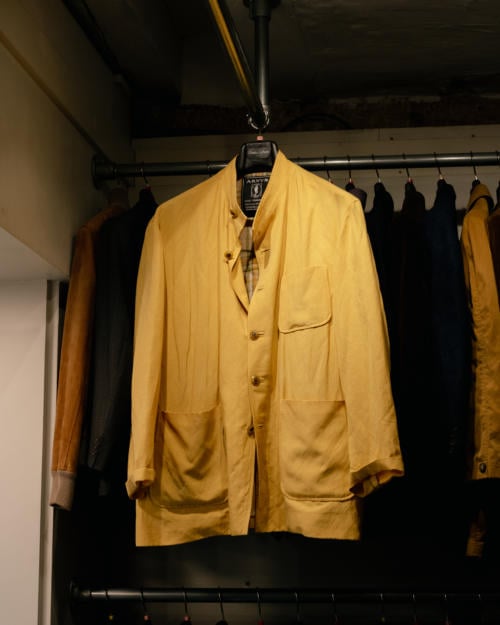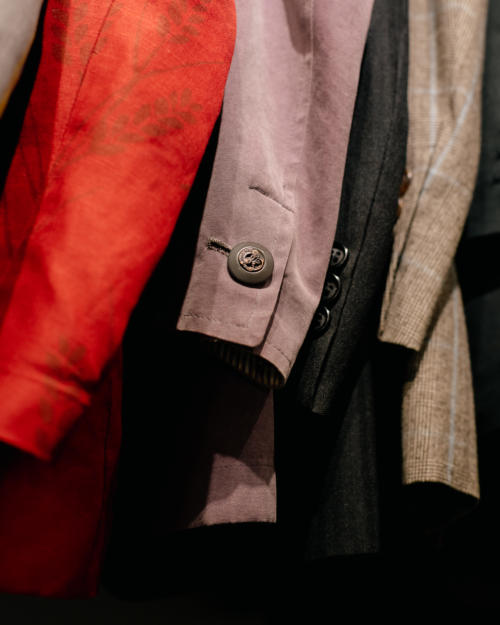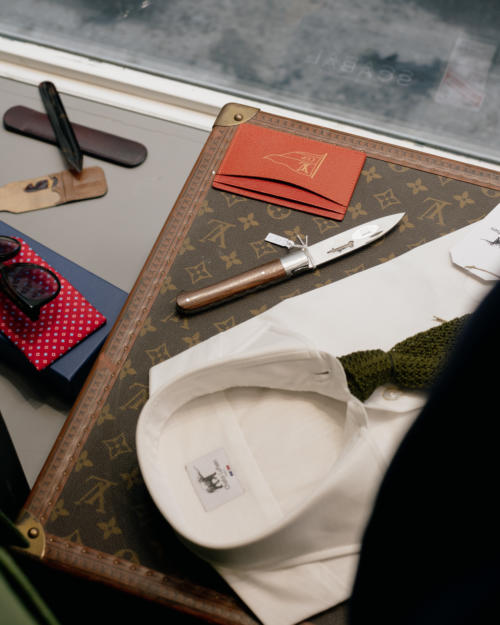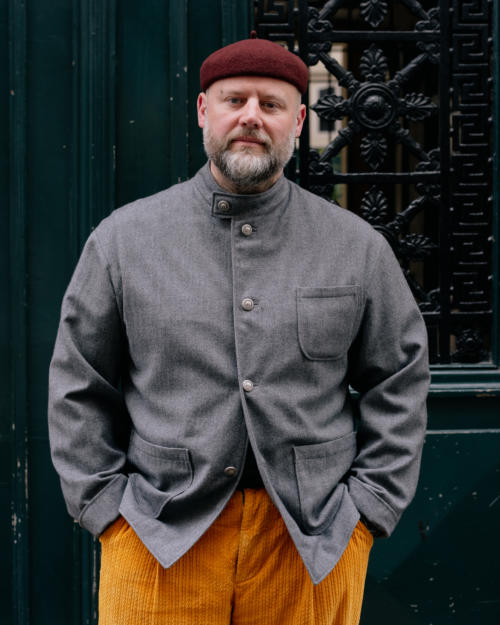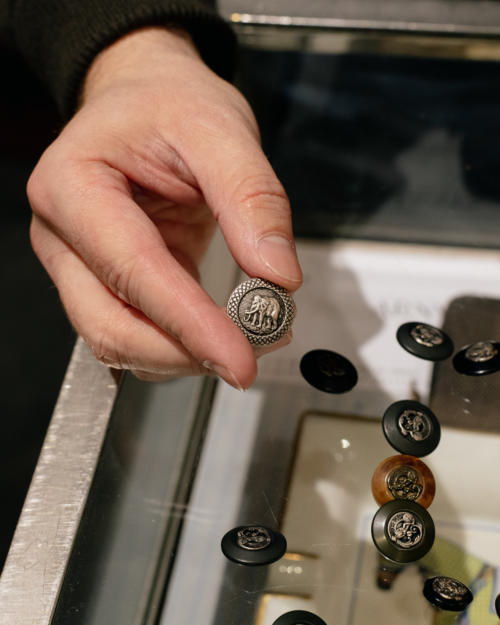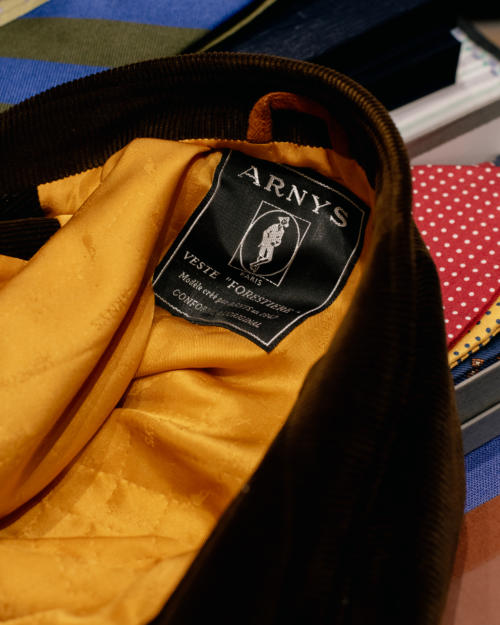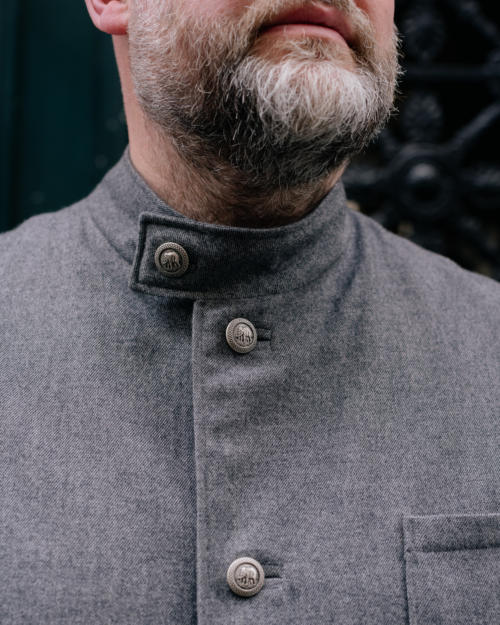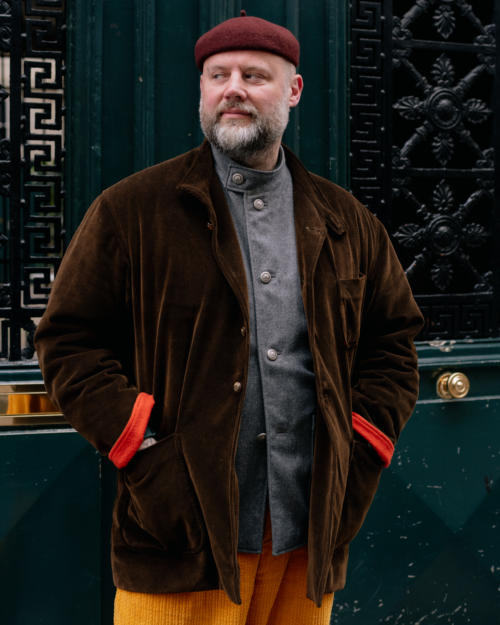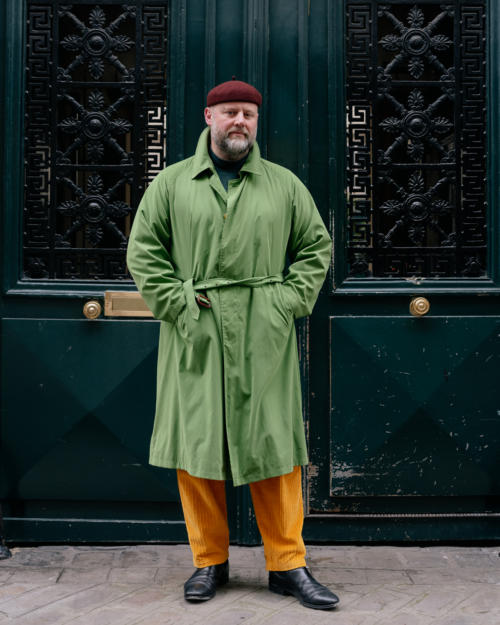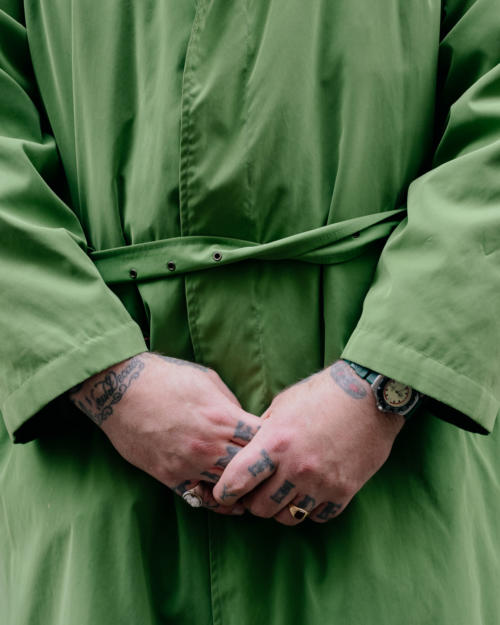CHATO LUFSEN: FRENCH VINTAGE AND MODERN RECREATIONS
From the kilo stores to the more specialised outlets, Paris is a city with an enviable array of vintage menswear options.
This spring, Simon filed reports on two of the best. Le Vif in the 16th, with its highly curated focus on Americana, co-founded by two chaps who cut their teeth at Ralph Lauren. And Brut in the Marais, where French workwear and militaria shares space with reworked and recut pieces offering more contemporary styling.
For me, however, no journey to the City Of Light is complete without a little jaunt a couple blocks over the Seine. In the heart of the Left Bank lies perhaps the most niche and specifically Parisian vintage-menswear destination: Chato Vintage.
This small store on a chic, unassuming backstreet is packed to the rafters with clobber and trinkets from the most cult of all defunct French houses, Arnys.
In the last instalment of these articles of mine from Paris, we caught up with one of the style architects of Arnys, Dominique Lelys, and his vision for continuity and progression at Artumes & Co.
Here on Rue De Verneuil – the Bohemian street where perhaps the most infamous French style icon of all time, Serge Gainsbourg, made his home - owner Christophe Lufsen (below) has created part store, part clubhouse for what he calls “les orphelins d’Arnys”: those distraught at the institution closing in 2012, or those like me who missed out on it during its seventy-year tenure as outfitter to the intellectuals and cultural mavens of Le Rive Gauche.
It was a health scare and an extended hospital stay that jolted Christophe into the world of retail. After years as a civil engineer, he wanted to inject a little passion and purpose into his working life, and try and make a living from his first love, clothing.
Five years later, his cramped shop mixes Arnys items with simpatico pieces from the upper echelons of French craftsmanship: Hermès, Vuitton, Berluti, Seraphin et al, although Arnys accounts for 90% of vintage sales.
Aside from a biannual browse of his inventory, I’m here as part of an ongoing search for a replacement for my trusty old Forestiere jacket.
The scarcity and skyrocketing prices of this Arnys model in the second-hand market means I’ve decided to look for something made by a contemporary brand that can fulfil the same purpose. Fortunately, alongside the ever-changing deadstock and pre-owned pieces, Lufsen offers two jacket models inspired by the Forestiere: The Borestiere, a straight and faithful recreation, and the Bores, a slight redesign/tinker with the familiar formula (below).
As a purist, I had my mind set on the Borestiere. I love the original design and own a couple of winter weights - one in moleskin, one in corduroy - plus one summer weight in unlined cream linen. Top of my mind was another unlined one, perhaps in a darker colour and more of an all-rounder, cloth wise.
I waxed lyrical about the origins and my love for the Forestiere in a piece I wrote last year on artists' clothing. As I stated then they can "slot seamlessly into a wardrobe, taking on a similar role to a chore coat or an unstructured chore coat”.
Since I wrote that piece, these kinds of ‘easy’ jackets have taken an even more prominent role in my post-retail, work-from-home life. I seem to have jettisoned most of the tailored jackets in my wardrobe for these hybrid work/casual garments.
Tebas and vintage tartan 49ers from Pendleton all fulfill this role very well, but the Forestiere has a certain extra resonance, and perhaps a little more romance, with its perceived history as being the uniform for a certain type of French gentleman; a little older, maybe a little fuller of figure, and less interested in the frivolities of fashion. Someone I aspire to, basically.
The inspiration for Lufsen’s updated version, the Bores, came from his experiences shopping at the original Arnys store on Rue de Sèvres as a young man.
Having seen the brand on the pages of Monsieur magazine, he ventured to try a Forestiere for himself. After asking for his size, the salesman brought one out ,but its generous, oversized cut was simply unsuitable for his smaller frame. Despite enquiring after a smaller size, the notoriously surly staff were unwilling to let him try one, insisting that this the way the garment was to be worn.
The experience meant that although Lufsen continued to shop with them, he never did buy a Forestiere. The Bores is therefore his attempt to offer a more conventionally proportioned version, perhaps with a slimmer-bodied customer in mind. (Similar in some ways to the way Colhays have redesigned the cuts of Lockie cardigans and knitwear to achieve the same goal.)
The tweaks are not instantly apparent, and I think have negotiable effect on the overall much-loved character and look of the garment.
There’s a shortening in length; a repositioning of the breast pocket further away from the armpit; a slight raising of the shoulder seam so it doesn’t drop as much. But most significant is a move in the placement of the button under the mandarin collar.
It has been raised from three inches below the collar to directly below. The effect is twofold: when latched, the look is cleaner, smoother and doesn’t tend to hang or bunch, and when open, it helps the heavier collar fold over and drop like a lapel.
Lufsen explains that, in his mind, the Forestiere and by default the Borestiere fits and functions as an overcoat, while he envisions the Bores more like a sports coat.
I’m instantly sold. Trying on the ready-to-wear examples, the differences between the size 56 Bores and the size 56 Forestiere I have brought with me are quickly apparent. Indeed, the Bores fits comfortably underneath the other, making the differences in length equally obvious (above).
It’s also evident I will want a made-to-measure version. I try a toile of a size 60 as a sort of hybrid between Lufsen’s innovations and my original intentions, to maintain that big look I’m going for. I even add 3cm in length to cover my posterior adequately.
For cloth, I opt for a nifty ‘summer cord’ from Solbiati in black. A linen base is ridged with cords of cotton for a more breathable, breezy take on the winter-friendly fabric. As a colour pop, I choose a goldenrod-yellow half lining – in keeping with the renowned colour combos of Arnys. Chato’s elephant-decal metal buttons look just right on top.
Price wise, the ready-to-wear Bores and Borestieres are available in a range of seasonal house cloths for €790 Euros, with a €200 Euro surcharge for made-to-order. Made-to-Measure is available for €300 over base pricing, and turnaround is approximately six weeks from order. I begin counting down the days until the finished garment’s arrival.
Below: Vintage Arnys raincoat in polyester, with the feel and look of washed, brushed silk

